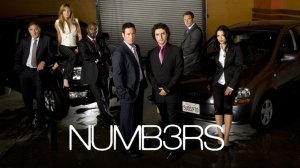Category Archives: Athena Middle Best Practices
Updated Numb3rs Activities
In my math classes, I integrate the television show Numb3rs into my instruction to motivate and connect the students to real world mathematical concepts. Numb3rs, a TV series that was on the CBS network for six seasons, is about an FBI agent and his mathematical brother who use math to solve crimes. I have several activities that I have created for the various math courses that I have taught (I also included Simpsons and Goonies activities):
Unit 1+2 (intro to proofs) – NUMB3RS – Mind Games
Unit 3 (parallel lines) – Numb3rs – uncert principle
Unit 5 (transformations) – Numb3rs – graphic
Unit 6 (coordinate geometry) – Numb3rs – one hour
Unit 7 (various geometry topics) – Goonies Activity
Unit 7 (constructions & concurrency) – Numb3rs – burn rate
Unit 8 (solids) – Simpsons – 3d Homer
Unit 9 (logic) – Numb3rs – money for nothing
Unit 10 (circles) – Numb3rs – cause and effect
Numb3rs (scatterplots) – Sniper Zero (math 8)
GEO – Tri Proofs – NUMB3RS – Primacy
GEO – Coord Geo – NUMB3RS – Serial Rapist Hot Zone
ALG – Inequalities – Numb3rs – Blackout
ALG – Poly – Numb3rs – Janus List
ALG – Equ – Numb3rs – Hardball
*Geometry is the Regents level New York State course that most 10th graders are expected to take. Algebra/Geometry Connections is a course preparing students to be successful in Geometry.
A typical Numb3rs Activity follows the following format:
20 minutes: students watch the first half of episode
5-10 minutes: class discussion of the mathematical ideas in show
30 minutes: activity worksheet completed in cooperative groups
20 minutes: students watch the second half of episode
10 minutes: class discussion of activity
Not only are students watching an attention-grabbing crime show, they are actively engaged in mathematical thought for 40 minutes. During the show, they are expected to write down mathematical ideas discussed in the show to share out later in class using this template. The activity worksheet is completed in cooperative groups; students work together to discuss the math involved in the episode and connect it to the Regents topics that are currently being studied.
The integration of these activities has greatly impacted student engagement and learning in my classroom. Students are more excited about coming to math class than they have in the past and their attendance has increased as a result. In addition, my Algebra/Geometry Connections classes went from a 56% passing rate on the Algebra Regents Exam to a 91% passing rate. I contribute this increase in part from the Numb3rs Activities. My students have stated that this motivational lesson helps them to pay attention and learn topics that they may not have shown any interest about in the past.
Feel free to use any of these activities in your classrooms. Please send me any questions or comments.
Using “The Simpsons” to Teach Solids
In my Geometry classes, I use the television show “The Simpsons” to teach volume and surface area. In the 10 minute episode titled 3D Homer, Homer goes into a world filled with Geometric solids. In the episode, Patty and Selma visit the Simpson family and Homer, desperate to avoid them, looks behind a bookcase and enters an eerie new world in which everything is in 3D.
The format of this lesson is as follows:
- Have the students watch the 10 minute episode. It is part of their annual Treehouse of Horror Halloween shows (e-mail me if you want the clip). You may want to have student write down math related things they see in the show.
- Discuss the episode and the math topics.
- Have students work in groups (or individually) on the SIMPSONS ACTIVITY WORKSHEET. The tasks of the activity include naming 3D solids in the episode, calculating the height of a pond in the 3D world, and finding the volume, lateral area, and surface area of various solids.
- Discuss and/or collect the activity.
I hope you enjoy the lesson. Please comment below.
8th Grader is Double Accelerated in Math
 Athena Middle School 8th grade student Xiaoning Guo has been double accelerated in math. Based on his proficiency score on the Scholastic Math Inventory and overall math average, Xiaoning was recommended for this challenge. He will take both Regents Integrated Algebra and Regents Geometry at the same time. Participation in this double accelerated math will allow him to take additional math classes in high school or begin dual credit courses at an earlier date. Mrs. Dionisio, Mrs. Gross, and Mrs. Obrien have been working with Xiaoning to provide him with a successful and enriching math experience.
Athena Middle School 8th grade student Xiaoning Guo has been double accelerated in math. Based on his proficiency score on the Scholastic Math Inventory and overall math average, Xiaoning was recommended for this challenge. He will take both Regents Integrated Algebra and Regents Geometry at the same time. Participation in this double accelerated math will allow him to take additional math classes in high school or begin dual credit courses at an earlier date. Mrs. Dionisio, Mrs. Gross, and Mrs. Obrien have been working with Xiaoning to provide him with a successful and enriching math experience.
We are proud of Xiaoning accomplishments in mathematics and willingness to undertake this challenge.
Little Things Matter
 At Athena Middle and High School, we support PBIS (Positive Behavior Interventions and Supports). PBIS is a decision making framework that guides selection, integration, and implementation of the best evidence-based academic and behavioral practices for improving important academic and behavior outcomes for all students.
At Athena Middle and High School, we support PBIS (Positive Behavior Interventions and Supports). PBIS is a decision making framework that guides selection, integration, and implementation of the best evidence-based academic and behavioral practices for improving important academic and behavior outcomes for all students.
One of these practices is sending home to parents/guardians Good News cards. Mrs. Lagana believes in positive reinforcement and family involvement in education. She sent home multiple cards praising her math students for good attendance, a good test grade, or an improved behavior.
 At Athena High, once a teacher fills out the student name and information, the PBIS team addresses the cards and sends them to the parents/guardians. Thank you Athena community for your help in creating a positive environment for our students.
At Athena High, once a teacher fills out the student name and information, the PBIS team addresses the cards and sends them to the parents/guardians. Thank you Athena community for your help in creating a positive environment for our students.
Mrs. Stowell’s Engaging Classroom Environment
 Wong (1991) suggests that a positive learning environment helps students feel secure and thus learning is enhanced and behavior is improved. Mrs. Stowell’s classroom certainly demonstrates a positive environment as the walls are covered with student work, high expectations are posted and followed by students, and engaging projects are a normal occurrence. There are even prisms hanging from the ceiling!
Wong (1991) suggests that a positive learning environment helps students feel secure and thus learning is enhanced and behavior is improved. Mrs. Stowell’s classroom certainly demonstrates a positive environment as the walls are covered with student work, high expectations are posted and followed by students, and engaging projects are a normal occurrence. There are even prisms hanging from the ceiling!
In a recent project, Mrs. Stowell asked students in her 6th grade class to work in teams to design a poster demonstrating their knowledge of quadrilaterals. Each shape on the poster had to be clearly labeled, characteristics clearly described, and integrate the idea of a quadrilateral family. Each group had a unique project that clearly demonstrated their knowledge of shapes (see photos below). Well done students!
Every Student Learned Using iPhones and Evernote.com
 On January 5, 2012, Andy Brown and Julie Mayer taught a 6th grade interactive lesson on volume using manipulatives, an iPhone, and a web based service called Evernote (www.evernote.com). Mr. Brown built a box out of cubes while asking students reflective questions to get them to understand the concept of volume. After the the box was built, a picture was taken using an iPhone and uploaded to an Evernote notebook.
On January 5, 2012, Andy Brown and Julie Mayer taught a 6th grade interactive lesson on volume using manipulatives, an iPhone, and a web based service called Evernote (www.evernote.com). Mr. Brown built a box out of cubes while asking students reflective questions to get them to understand the concept of volume. After the the box was built, a picture was taken using an iPhone and uploaded to an Evernote notebook.
Students were very engaged in this lesson because the picture they saw Mr. Brown take was instantly shown on the SmartBoard in their classroom. Individual students were then assigned dimensions and built boxes of their own out of cubes (see photos below). The iPhone was used again to take photos of their individual boxes and post them to the Evernote notebook. Then, the class had a discussion about the concept of volume and had to calculate how many cubes made the box. Every student was able to discover how to find the volume of a rectangular prism. They are now ready to dig deeper and learn how to show more sophisticated work in the coming days.
Great work students and teachers!
Geometer’s Sketchpad in Action
 Mrs. Mayer engaged her students using the dynamic software program Geometer’s Sketchpad. In both of Mrs. Mayer’s 12:1:1 classes, she asked high level questions that challenged her students to think. Her students responded with great answers using appropriate mathematical language and did an amazing job with the program! Mrs. Mayer’s students used Sketchpad to measure the three angles of a triangle. Even though all students in the class had different size triangles, they all came up with the same angle sum–180 degrees! This was a great constructivist lesson that allowed the students to discover mathematics, rather than be told mathematics. Teaching assistants Mrs. Arsenault and Mrs. Hale also did a great job working with students and facilitating conversations.
Mrs. Mayer engaged her students using the dynamic software program Geometer’s Sketchpad. In both of Mrs. Mayer’s 12:1:1 classes, she asked high level questions that challenged her students to think. Her students responded with great answers using appropriate mathematical language and did an amazing job with the program! Mrs. Mayer’s students used Sketchpad to measure the three angles of a triangle. Even though all students in the class had different size triangles, they all came up with the same angle sum–180 degrees! This was a great constructivist lesson that allowed the students to discover mathematics, rather than be told mathematics. Teaching assistants Mrs. Arsenault and Mrs. Hale also did a great job working with students and facilitating conversations.
Students were also challenged to answer the following questions that pushed mathematical thought:
- What is the sum of the angles in a triangle?
- Could we have 2 right angles in a triangle?
- How can you prove that this is an obtuse triangle?
Students commented on how fun Geometer’s Sketchpad was and asked if they could download it on their computers at home. Mrs. Mayer and her students clearly met the learning objectives of the lesson and will likely remember them for a long time. Well done!
Athena Middle and High Schools Receive SMART Response Grants
The Greece Education Foundation (GEF) awarded grants to both Athena Middle School and Athena High School for a set of 32 SMART Response Clickers! The foundation paid over $1,500 per school. The SMART Response system gives teachers the ability to instantly track quiz results and lesson comprehension to gain immediate insight into student learning and help increase overall retention and engagement. These clickers are already in the hands of many students and teachers at Athena. Academic engagement and achievement will be maximized as a result of this amazing foundation.
The Greece Education Foundation was formed in June 2000 to enrich and enhance educational opportunities for Greece Central School District students and staff in a manner that supports learning. The GEF receives gifts, bequests, and donations from local businesses and community members and subsequently provides grant funding to enhance educational programs that cannot be readily financed through local tax dollars or other public resources reflected in the annual school budget. These are beneficial projects that might not be initiated, improved, or maintained without outside funding.
Thank you Greece Education Foundation!
High Levels of Learning
 For these first ten weeks of school, I have had the opportunity to work with Mrs. Esposito, a great math and special education teacher. The uniqueness of one of her classes this year is that it is multi-grade level (Half 7th graders and half 8th graders in the same class). In other words, she is responsible for teaching both 7th and 8th grade math curricula in one class. She has tackled this challenge in a number of ways ensuring that each child is experiencing high levels of learning. For some topics that overlap both curricula, she instructs them in a large group while offering many opportunities for individual questions. For topics specific to a grade level, she utilizes a core extension period, Castle Learning, and the alternative teaching model of co-teaching. Cook and Friend (1995) describe alternative teaching as one teacher teaching a specific topic to one group, while the other teacher teaches or reviews a different topic with a second group. Although I have had many opportunities to alternative teach with Mrs. Esposito, I credit the teaching assistants, Mrs. Walker and Mrs. Halligan, for taking on this role to help meet the needs of each child in their classroom. For example, one of the teaching assistants will take the 7th grade students and work on one-step equations, while Mrs. Esposito will work on multi-step equations with the 8th graders. This is a great example of the high levels of learning that place at Athena Middle School.
For these first ten weeks of school, I have had the opportunity to work with Mrs. Esposito, a great math and special education teacher. The uniqueness of one of her classes this year is that it is multi-grade level (Half 7th graders and half 8th graders in the same class). In other words, she is responsible for teaching both 7th and 8th grade math curricula in one class. She has tackled this challenge in a number of ways ensuring that each child is experiencing high levels of learning. For some topics that overlap both curricula, she instructs them in a large group while offering many opportunities for individual questions. For topics specific to a grade level, she utilizes a core extension period, Castle Learning, and the alternative teaching model of co-teaching. Cook and Friend (1995) describe alternative teaching as one teacher teaching a specific topic to one group, while the other teacher teaches or reviews a different topic with a second group. Although I have had many opportunities to alternative teach with Mrs. Esposito, I credit the teaching assistants, Mrs. Walker and Mrs. Halligan, for taking on this role to help meet the needs of each child in their classroom. For example, one of the teaching assistants will take the 7th grade students and work on one-step equations, while Mrs. Esposito will work on multi-step equations with the 8th graders. This is a great example of the high levels of learning that place at Athena Middle School.






 My name is Andy Maillet and I am an instructional math coach at Athena Middle and High Schools.
My name is Andy Maillet and I am an instructional math coach at Athena Middle and High Schools.



